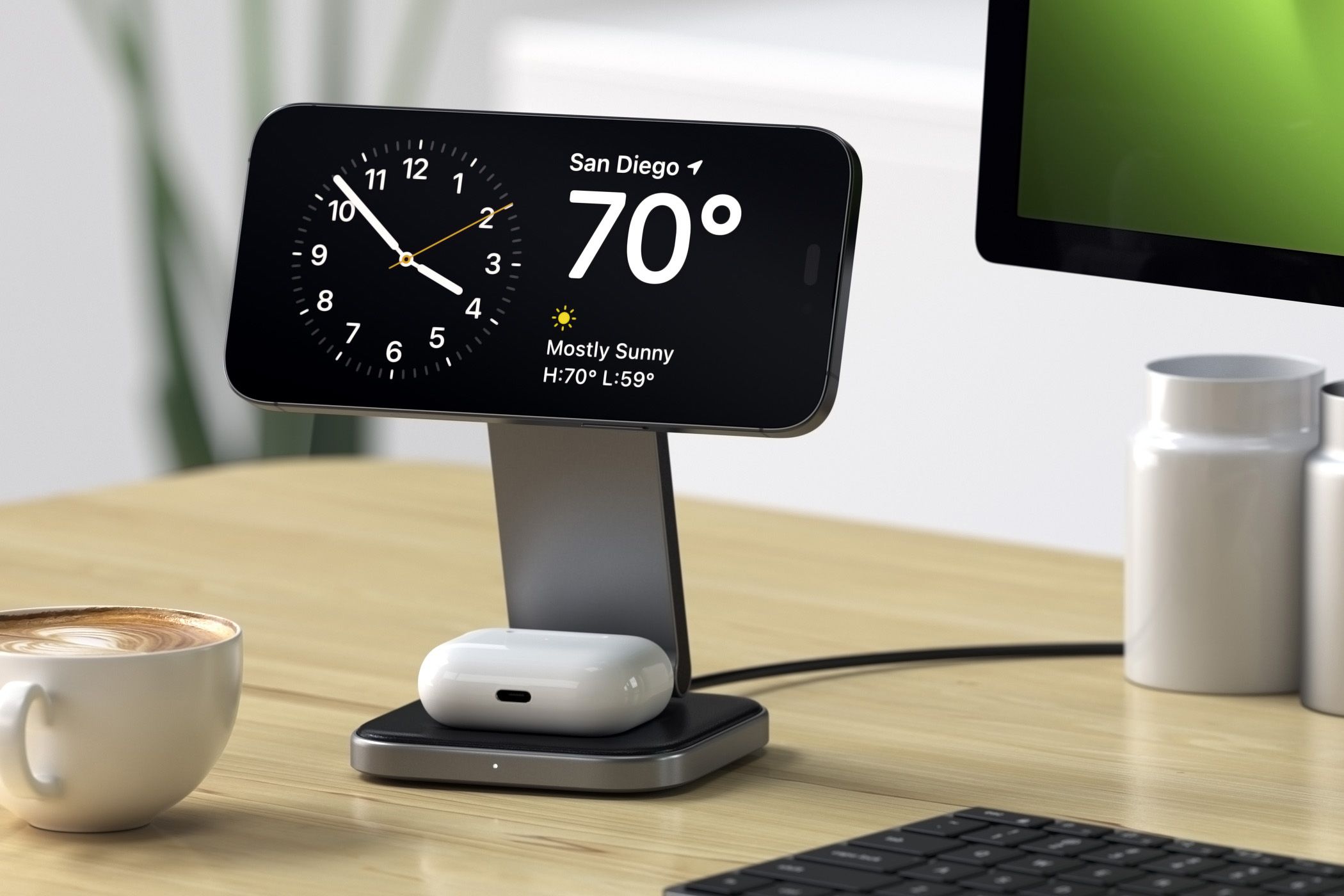10 Tips for macOS Newbies From a macOS Newbie
macOS
Quick Links
-
Embrace the “Command” and “Option” Keys
-
Do Not Close Browser Windows by Clicking the Red X Button
-
Disable Mouse Acceleration
-
Install Apps by Dragging the APP File to the Application Tab in Finder
-
Disable the “Tiled Windows Have Margins” Option
-
Enable the “Double-Click a Window’s Title Bar to Minimize” Option
-
Spend Some Time Figuring Out Mission Control
-
Enable Window Previews in the Dock via Terminal
-
Consider Hiding the Dock
-
Use BetterDisplay for Scaling if You Use a Third-Party Monitor
Have you recently switched to macOS? Me too! I’ve been using macOS for about three months now, and during that time, I’ve built a collection of tips for macOS newbies that should make your first few weeks on macOS easier and less confusing.
1
Embrace the “Command” and “Option” Keys
One of the first things I’ve noticed is that macOS loves its keyboard shortcuts. While I’m used to the basic shortcuts everyone uses on Windows (copy, paste, cut, undo, and so on), along with a few shortcuts I use in Total Commander, macOS is chock-full of them, and most of them include the “Option” and “Control” keys.
The first one is labeled as “Command” in macOS and on macOS-friendly keyboards, or simply “Ctrl” on most keyboards made to be used both on Windows and macOS. It more or less plays the role of the “Ctrl” key on Windows, meaning it’s the basis for Copy, Paste, Cut, Redo, Undo, and other similar keyboard shortcuts.
The other important key is the “Option” key. The key plays the role of a modifier key on macOS. With it, you can unveil extra options in-app menus, activate various keyboard shortcuts, and perform other handy commands that Apple doesn’t even try to explain to new macOS users for some reason. Seriously, there’s a number of cool actions you can perform with the “Option” key.
My favorite use of the key is more granular volume control, which is too drastic by default, since it has only 16 steps, compared to the 50 steps you’ve got on Windows. By holding “Option+Shift” and then hitting the volume buttons, you increase the number of steps to 64, which is more like it.
2
Do Not Close Browser Windows by Clicking the Red X Button
I made this mistake on the first day of using macOS. I opened Chrome (my browser of choice for work), opened all the pages I use daily for work (Slack, Skype for Web, Asana, and so on), and then closed Chrome by hitting the red “X” button. I mean, it’s the same button as on Windows, right?
Wrong. Closing a browser window this way will not save your opened tabs. After you open the browser the next time, you’ll be greeted with a blank slate, with all your tabs gone.
By hitting the red “X” on macOS, you actually do not fully close the app in question. The kicker is that the app’s not fully closed, You just closed the window of tabs, or got rid of your collection.
What matters is, if you want to close the browser and have your opened tabs greet you the next time you open it, right-click its icon in the Dock, and then click the “Quit” button. Use this action for all apps you want to fully close, not keep them in that nonsensical limbo they go to after you hit the red “X” button, or simply use the “Command+Q” keyboard shortcut that does the same thing.
3
Disable Mouse Acceleration
macOS and Windows aren’t that similar, but what both operating systems have in common is enabling mouse acceleration by default. One of the first things I did was disable it, which you might want to do too.
To do that, open “Settings,” go to the “Mouse” menu, then click the “Advanced” button.
Once there, simply turn off the “Pointer Acceleration” toggle. That’s it!
4
Install Apps by Dragging the APP File to the Application Tab in Finder
Most macOS apps are downloaded as DMG files, which you should double-click and then drag the app icon to the “Applications” folder for it to install. Once you do this, you can find the app in the Launchpad, the macOS version of the Start menu app list on Windows 10.
But some apps are downloaded as APP files, so you don’t have to install them. You can run those apps immediately by double-clicking them in situ. The catch is that APP files won’t automatically be added to Launchpad or indexed as Applications, meaning you’ll have to either add them to the Dock or visit the location where you downloaded them to open them.
The solution here is pretty simple. Open Finder, then open the folder where the APP file is saved and drag it to the “Applications” folder, which should be pinned to the “Favorites” tab on the left by default.
5
Disable the “Tiled Windows Have Margins” Option
One of the biggest “Really, Apple?” moments happened in the first 10 minutes of using my M4 Mac Mini. I wanted to maximize an app window (or fill it, as it’s called on macOS) and just dragged it to the top of the desktop, to the menu bar, which did the trick.
But the window had margins instead of using all the available space, which looked off as heck. Naturally, I tried to tile two windows vertically, and, would you know it, those hideous margins were there again. Luckily you can disable this.
Firstly, open “Settings,” click “Desktop & Dock.” Scroll down until you see a toggle called “Tiled Windows Have Margins,” and disable it. Now your tiled windows will use every piece of real estate instead of having ugly margins!
6
Enable the “Double-Click a Window’s Title Bar to Minimize” Option
Don’t know about you, but for me, the three buttons on the upper left side of app windows (red, yellow, and green) are too darn small to click without effort. The good news is that you don’t really need them.
As I’ve already said, the red “X” button doesn’t really close apps, just windows. The green button is for switching apps to full screen. To be honest, I don’t like working in full screen because there’s no menu bar, so I cannot see the time and shortcuts to apps running in the background.
Now, the yellow button is handy because that’s the “Minimize” button. Luckily, you don’t have to hunt for it whenever you want to minimize an app. Just go to “Settings,” open “Desktop & Dock,” click the “Double-Click a Window’s Title Bar To” button, and select “Minimize.”
Now you can minimize apps by double-clicking their title (top) bar. You can also choose to maximize app windows by double-clicking the title bar. But since you can perform the same action by dragging the app to the menu bar, I recommend using double-click to minimize them instead.
You can also use Command+M to minimize or hit Command+H to hide.
7
Spend Some Time Figuring Out Mission Control
Mission Control is, hands down, one of the best features in macOS. It’s super handy in case you always work with a bunch of opened windows because it allows you to view all opened windows you’ve got on your Mac at once, each window neatly arranged so you can see it in full. If an app has multiple opened windows, they’re sorted one behind another, and you can click any of them to bring it to the front.
This is so useful for my workflow because, most of the time, I’ve got at least two Chrome windows opened, at least one Firefox window, Finder (macOS version of Windows Explorer), Settings, Spotify, and Activity Monitor (macOS version of Task Manager) also. So, instead of chasing them around the desktop, I can just activate Mission Control, see them all at a glance, and pick the one I need at that moment.
To launch Mission Control, you can press the F3 button, use a three-finger or four-finger upward gesture on the trackpad, the Control+Up Arrow keyboard shortcut, or the Mission Control icon in the Dock. You can also map Mission Control to a Hot Corner (another super useful feature) and then launch it by moving your mouse to the corner you mapped Mission Control to. If you own a Logitech MX Master 3S, you can map Mission Control to the button located at the bottom of the thumb rest.
To assign Mission Control to one of the four Hot Corners, open “Settings,” click “Desktop & Dock,” scroll all the way down until you see the “How Corners” button, and click it.
Once opened, assign Mission Control to any of the four corners and click “Done.” I recommend filling each of the four corners with an action to make navigating macOS easier and faster.
Now, Mission Control is so much more than just a window manager. You can control multiple desktops with it, each with different apps active, open and close desktops, use full-screen apps on different desktops, and more. I’m still learning the ropes, so if you want to learn more, check out our in-depth Mission Control guide.
8
Enable Window Previews in the Dock via Terminal
Mission Control is great, but it doesn’t show minimized windows. If you’re a Windows refugee, like me, you’ll soon realize that you cannot see window previews of minimized apps when you hover over their icons in the Dock. This is especially jarring when you’ve got multiple windows of the same app minimized because you cannot choose to open just the one you want.
There’s a way to look at all running instances of an app if you own a MacBook by force-clicking (pressing the trackpad and then applying extra pressure) the app’s icon in the Dock, which summons App Expose, showing all running instances of an app. But this isn’t possible with a regular mouse. That said, you can map this to the thumb button if you own a Logitech MX Master 3S.
If you’re using a regular mouse, you can see app window previews in the Dock by typing the following in Terminal:
defaults write com.apple.dock scroll-to-open -bool TRUE; killall Dock
Hit Enter. Now you can hover over an app’s icon in the Dock, scroll up with the scroll wheel, and see a preview of every window of said app, whether opened or minimized. If the window is opened, you will see a massive preview you can click to switch to. If the window is minimized, you’ll see a thumbnail preview, as shown below. Again, click it to switch to that window. Lastly, scrolling down will collapse previews and return you to the app you’re currently using.
If you’ve got an open and a minimized window of the same app, scrolling up will show a preview like the one below.
If you don’t like the feature, you can turn it off by typing the following in Terminal:
defaults write com.apple.dock scroll-to-open -bool FALSE; killall Dock
9
Consider Hiding the Dock
As a Windows veteran, I’m used to the taskbar being always visible at the bottom unless I’m gaming or using some other full-screen app. Naturally, after I switched to macOS, keeping the Dock always visible was a natural choice.
But the Dock isn’t the Windows taskbar. Instead of merging both into a single feature, macOS shows you the clock, a selection of quick settings, and apps running in the background in the menu bar at the top. The Dock, on the other hand, only hosts app icons, along with notifications showing which apps are opened. Further, if you maximize an app with the Dock always visible, it’ll look like the screenshot below, which isn’t only off-putting but also takes away a good chunk of screen real estate.
I strongly recommend every macOS neophyte, especially those coming from Windows, to hide the Dock. You don’t need it showing all the time, and it ascends quite fast after you hover the mouse over the bottom of the screen. I did this, and now I cannot imagine using macOS with the Dock visible.
To auto-hide the Dock, open “Settings,” click “Desktop & Dock,” scroll to the “Automatically hide and show the Dock” toggle, and enable it. That’s it! Just give it a few days, and you’ll see that this works much better than having the Dock shown at all times.
Another option if you’re worried about screen real-estate, is to put the dock to the right-edge of the screen and leave it visible.
10
Use BetterDisplay for Scaling if You Use a Third-Party Monitor
My second “Really, Apple?” moment happened when I tried to find the scaling option. Unfortunately, it turns out that if you use a third-party monitor like I do since I own a Mac Mini, you have limited options to pick from, scaling-wise.
Unlike Windows, which allows you to freely scale user interface elements regardless of the resolution, scaling is resolution-based on macOS. I have only two scaling resolutions to pick from that look nice and sharp by default. The first is my native, 3440 x 1440 resolution, where everything looks super tiny. The second option is half of the native resolution (1720 x 720), where everything looks comically large.
These are the only two resolutions that come in HiDPI mode, which leaves the display at its native resolution while scaling user interface elements to match the active resolution. So, I had to find a way to make the UI look right to me without being too small or too large, and I found it in BetterDisplay.
This powerful app allows you to change a smorgasbord of display-related options. The bad news is that you have to pay for a full suite of features, but the good news is that the display scaling feature is free. Just download BetterDisplay, and you’ll get a ton of HiDPI resolution options to choose from. If you also have a 3440 x 1440 ultrawide monitor like I do, I found that a 2374 x 994 HiDPI resolution makes the UI just right for me, but your mileage may vary.
This is just the tip of the iceberg regarding handy tips for macOS users. If you want to continue your journey of discovery, I recommend checking out some more powerful macOS features you should know about. You should also check out our favorite single-purpose apps, our daily driver productivity apps and learn more about Spotlight, Apple’s powerful search feature.































